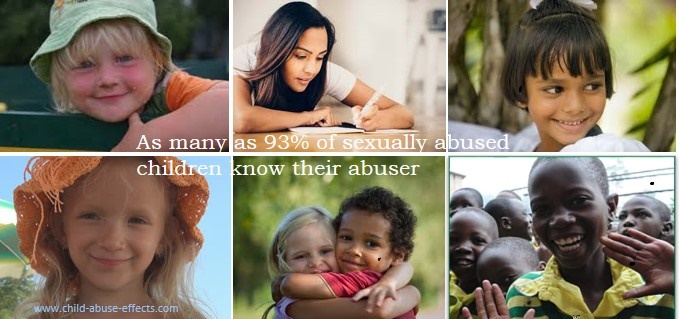Female Sex Offenders

Compared to men, very few female sex offenders get charged, let alone convicted. Sexual abuse by women rarely gets reported. Victims often don't understand that what happened to them was abuse until years later when they are adults.
|
When the victim is a male adolescent, often times the sexual abuse goes unreported because of the perception that sex with an older female is a "right of passage". But victimization by female offenders can have results as devastating as victimization by male sex offenders, including: » self-blame
|
|
Why Abusive Behaviour by Female Offenders Goes Unreported
 |
Children are reluctant to report the person they depend on. |
 |
Inappropriate sexual behaviour is often masked in bathing, dressing or comforting the victim. |
 |
When boys are the targets of female offenders, they are less likely to disclose. |
 |
There is denial of the existence of sexuality in females. |
 |
Females who sexually abuse undermines feelings about how women should relate to children. |
 |
People find it difficult to understand how women could sexually abuse. |
 |
Children and adolescents who disclose sexual abuse by female offenders are often told they are fantasizing. |
Profile of Female Sex Offenders
» low self-esteem
» history of severe emotional and verbal abuse
» absence of parent during childhood
» sexual (especially incest) victimization of the woman as a girl
» loss of spouse
» responsibility for supporting family
» feelings of isolation and alienation
» history of indiscriminate or compulsive sexual activity
» history of drug or alcohol abuse
Categories of Female Offenders:
Rudin et al. (1995, p. 9651) classified female offenders into four different groups:
 |
Predisposed Intergenerational: The most common type, a lone female perpetrator with a history of incest with more than one person. |
 |
Male-Coerced: The next most common, with abuse being initiated by male partner. |
 |
Experimental/Exploiter: A lone teen perpetrator who targets young male children within a baby-sitting context. |
 |
Teacher/Lover: A lone perpetrator who falls in love with an adolescent male. |
One example of the Teacher/Lover category of female sex offenders is the Mary-Kay Latourneau case in America. She not only had a sexual relationship with her underage male student, a babies resulted from the relationship.
Historically, cases of the Teacher/Lover category have been between young female students and male perpetrators.
 | Despite the double standard regarding teacher-student sexual liaisons--which tends to see girls as victims and boys as fortunate--many boys will be damaged by such relationships; the younger they are, the more damage they are likely to experience (Frank, 20002). |
Clearly, the sexual abuse of children and youth must continue to be unacceptable whether the perpetrator is male or female.
Some Statistics on Female Offenders:
 | Female offender research is limited, though Canadian statistics show an alarmingly high rate of sexual abuse by women (a range of 59% - 80%) in the backgrounds of rapists, sex offenders and sexually aggressive men (Matthews, 1996, p. 303). |
 | The majority of female offenders were family members who tended to abuse within their role as caretakers; 25% were baby-sitters, teachers or day care workers (Rudin, et al., 1995, p. 9694). |
 |
In one study done by Kaufman et al. (1995, p. 305), 88% of female sex offenders were teachers and 23% were baby-sitters. |
 | In the Canadian Incidence Study of Reported Child Abuse and Neglect, 7% of sexual abuse investigations involved mothers as the alleged perpetrators--5% biological mothers and 2% stepmothers (Trocme et al. 2001, p. 496). |
 | When the victim is male, female offenders account for 1% - 24% of the abusers; when the victim is female, female sex offenders account for 6% - 17% of the abusers (Kaufman et al., p. 3237). |
 |
In an American Justice Department study of 60,991 victims of sexual assaults, female sex offenders were most common in assaults against victims under age 6 years of age. For these very young victims, 12% of offenders were females; for victims aged 6-12 years, 6% of the offenders were female; and for victims ages 12-17, 3% were female sex offenders (Snyder, 2000, p. 88). |
 |
Female sex offender research shows that women co-abused alongside a male partner in 50% - 77% of female offender cases (Rudin, Zalewski & Bodmer-Turner, 1995, p. 9649). The Karla Homolka case is a prime example. |
 |
Research shows that there is no difference in the severity of abuse by female sex offenders as compared to male sex offenders (Rudin et al., 1995, p. 96910). |
<< Back to Sex Offenders
References
NOTE: Information pages on this site were based on material from the  Canadian Red Cross RespectED Training Program. Written permission was obtained to use their copyrighted material on this site.
Canadian Red Cross RespectED Training Program. Written permission was obtained to use their copyrighted material on this site.
Female Sex Offenders
1 Rudin, M., Zalewski, C., & Bodmer-Turner, J. (1995). Characteristics of child sexual abuse victims according to perpetrator gender. Child Abuse and Neglect, 19(8), 963-973.
2 Frank, S. (2000, May 22). Caging birds of prey. TIME Online Edition, Retrieved December, 2002 from http://www.time.com/time/magazine/intl/article/0,9171,1107000522-46757,00.html
3 Matthews, F. (1996). The invisible boy: Revisioning the victimization of male children and teens. Ottawa: National Clearinghouse on Family Violence.
4 Rudin, M., Zalewski, C., & Bodmer-Turner, J. (1995). Characteristics of child sexual abuse victims according to perpetrator gender. Child Abuse and Neglect, 19(8), 963-973.
5 Kaufman, K., Wallace, A., Johnson, C., & Reeder, M. (1995). Comparing female and male perpetrator's modus operandi: Victims' reports of sexual abuse. Journal of Interpersonal Violence, 10(3), 322-333.
6 Trocme, N., & MacLauren, B. et al. (2001). Canadian incidence study of reported child abuse and neglect: Final report. Ottawa: National Clearinghouse on Family Violence, Health Canada.
7 Kaufman, K., Wallace, A., Johnson, C., & Reeder, M. (1995). Comparing female and male perpetrator's modus operandi: Victims' reports of sexual abuse. Journal of Interpersonal Violence, 10(3), 322-333.
8 Snyder, H. (2000, July), Sexual assault of young children as reported to law enforcement: Victim, incident, and offender characteristics. Retrived December, 2002, American Bureau of Justice Statistics Clearinghouse, http://www.ojp.usdoj.gov/bjs/ 312-314.
9 & 10 Rudin, M., Zalewski, C., & Bodmer-Turner, J. (1995). Characteristics of child sexual abuse victims according to perpetrator gender. Child Abuse and Neglect, 19(8), 963-973.
From Victim to Victory
a memoir
How I got over the devastating effects of child abuse and moved on with my life
From Victim to Victory
a memoir
How I got over the devastating effects of child abuse and moved on with my life
Most Recent
-
Converging Stolen Lives
Jan 30, 18 01:13 PM
There was a time and space I didn’t think about you, or your abuse. Where when I looked back at my life, I only saw normal things, a normal childhood. -
A letter to one of the 13 Turpin children
Jan 29, 18 11:33 AM
A heartfelt letter by a former classmate that speaks to bullying and regrets. You'll find it on my Facebook group. I hope you'll join and get in on the discussion. -
Dissociated From Abuse
Jan 29, 18 11:00 AM
I was sexually abused by my father from age 6 to 13, which stopped when I started talking about it during the day. The teenage brother of my best friend


